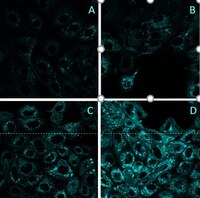SCT240 Sigma-AldrichBioTracker™ Blue TFCH Oxidative Stress Probe
Produits recommandés
Aperçu
| Replacement Information |
|---|
| References |
|---|
| Product Information | |
|---|---|
| Detection method | Fluorescence |
| Presentation | Lyophilized. Yellow solid. |
| Quality Level | MQ100 |
| Biological Information | |
|---|---|
| Molecular Weight | 280.63 |
| Physicochemical Information |
|---|
| Dimensions |
|---|
| Materials Information |
|---|
| Toxicological Information |
|---|
| Safety Information according to GHS |
|---|
| Safety Information |
|---|
| Storage and Shipping Information | |
|---|---|
| Storage Conditions | Store at -20°C, desiccated and protected from light. Note: Centrifuge vial briefly to collect contents at bottom of vial before opening |
| Packaging Information | |
|---|---|
| Material Size | 1 mg |
| Transport Information |
|---|
| Supplemental Information |
|---|
| Specifications |
|---|
| Global Trade Item Number | |
|---|---|
| Référence | GTIN |
| SCT240 | 04065268102411 |
Documentation
BioTracker™ Blue TFCH Oxidative Stress Probe FDS
| Titre |
|---|
Fiche technique
| Titre |
|---|
| Data Sheet-SCT240 |








